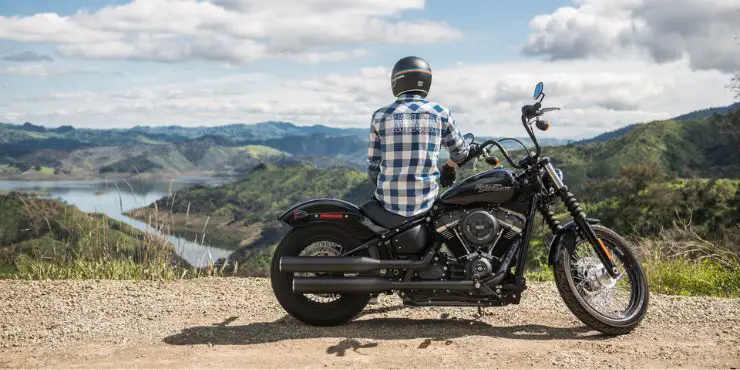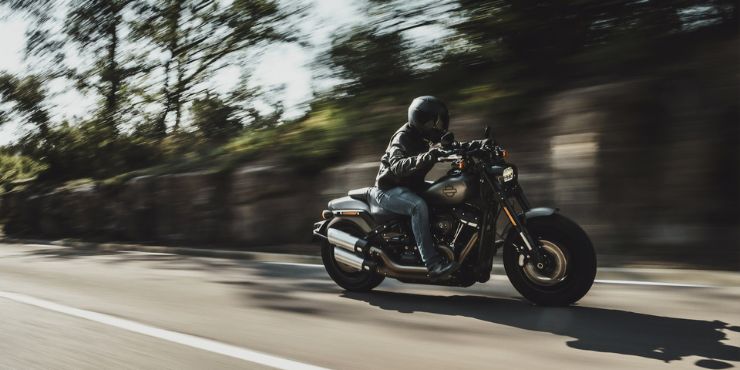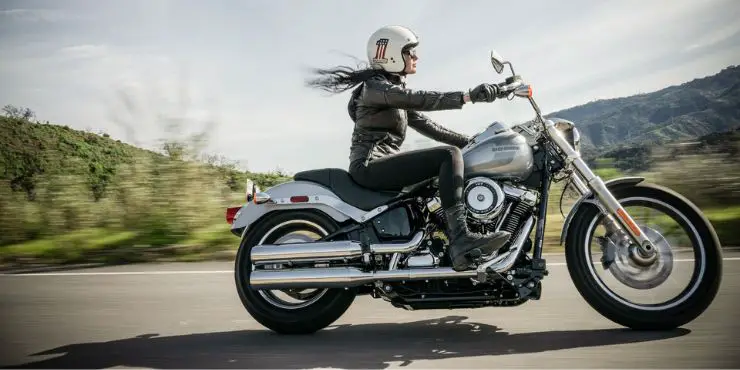Do you love riding your Harley-Davidson bike in windy conditions, but sometimes it becomes too much? Are you struggling to calculate when is it too windy to ride a motorcycle? If so, then you’re in the right place.
Riding in winds over 30-40 mph can be dangerous due to loss of control, especially for lighter bikes. Crosswinds can significantly impact stability, making it too risky to ride.
In this article, you’ll get to know all about driving in windy conditions, when is it too windy to ride a motorcycle, the dangers of driving in extremely windy conditions, how to safely drive in windy conditions, and more. Stick around to get all the answers that you’re looking for.
When is it too windy to ride a motorcycle?
The wind is a heavily overlooked danger that come along with riding a Harley-Davidson motorcycle. Many beginners overlook the effect windy conditions have on their driving, which can sometimes put them in danger. This is why it is important to be informed and know when is it too windy to ride a motorcycle.
How much wind is too much wind will depend on the rider and the bike. A heavier Harley-Davidson bike will be more stable in higher winds compared to a lighter bike. Additionally, a motorcycle having a higher center of gravity will be less stable than one having a lower center of gravity. The biker’s experience and skills are also important and will play a key role in how stable the bike will be on the road.
Riding your Harley-Davidson bike in 15 mph wind
Riding a Harley-Davidson bike in 15 mph wind can be quite difficult, but not really dangerous. Lighter and smaller bikes can get affected by winds around 15 mph. Heavier bikes usually don’t have any trouble riding in 15 mph winds.
Riding your Harley-Davidson bike in 20 mph wind
Riding a bike in 20 mph winds can be a bit dangerous for smaller, lighter motorcycles. Heavier bikes typically don’t have a lot of trouble riding in 20 mph winds. Lightweight, taller bikes with a higher center of gravity get affected much more, even with slower winds of 15-20 mph.
Riding your Harley-Davidson bike in 25 mph wind
Riding a bike in 25 mph wind is often the point where most bikers start feeling a bit uncomfortable. Riding in 25 mph wind can get a bit dangerous if you’re driving a smaller, lighter bike or one with a higher center of gravity.
Riding your Harley-Davidson bike in 30 mph wind
Riding a bike in 30 mph winds can be dangerous for bikers. Smaller, lighter bikes and bikes with a higher center of gravity can get affected by winds over 30 mph. Heavier bikes usually deal a lot better when you’re driving with winds around 30 mph.
For example, many Harley-Davidson bikes are much better at dealing with strong winds. These bikes have a lower center of gravity and have a heavy weight, which means they can be easily taken out with winds of over 30 mph. Many bikers don’t ride their bike in winds that are around or exceed 30 mph. This is especially true if you’re riding a small bike below 400 pounds.
Riding your Harley-Davidson bike in 40 mph wind
Riding a bike in 40 mph winds can be very dangerous and much more difficult. Heavier bikes above 700 lbs. and a lower center of gravity can do well at winds that are 40-45 mph. It is not recommended that you should be riding smaller, lighter bikes at such wind speeds.
Heavier bikes above 700 lbs. such as Harley-Davidson Cruisers and tourers do not get that affected by the wind. These bikes can be easily driven relatively trouble-free in winds that are 40 to 45 mph.
Riding your Harley-Davidson bike in 50 mph wind or more
Generally, wind speeds that exceed 50 mph are very dangerous for bikers. Bikers shouldn’t be ridden at wind speeds that exceed 50 mph. When riding in winds that are over 50 mph, both you and your bike can get tossed around with ease. Moreover, you’ll be having very little control over your bike.
Winds that exceed 50 mph are considered to be damaging winds, as they can easily cause damage to ground structures. Winds that are 60 mph or higher are so strong that they have a noticeable effect on cars.
Dangers of riding your Harley-Davidson bike in extremely windy conditions
1. Unpredictable behavior on the road
Riding a bike in extreme winds that are strong can cause your bike to have an unnatural and unpredictable behavior on the road. Unexpected strong wind gusts could cause the biker to lose control and crash. Exercising extra caution will be important for your safety.
Strong wind gusts can cause the bike and other vehicles on the road to move slightly. This makes riding the bike in such conditions extremely dangerous.
2. Flying debris and other objects
Strong winds can result in random objects flying across the road. These flying objects and debris can be dangerous if they hit your bike or your helmet. The rocks, dirt, debris, and other objects carried by the wind can potentially damage the paint and cause the bike to look worn out.
3. Dangerous for new riders
Lack of experience is an important factor that must be accounted for. A more experienced biker will be able to navigate stronger winds and any unexpected wind gusts better than a beginner. They’ll be a lot more aware of how to position their body and negate the effects of strong winds.
What it means for new riders is that experts often make the smart choice and consider not taking out their bike at winds that are close to being strong. Strong winds can knock the rider off the bike, and it can be very dangerous. It can result in injuries of varying severity, ranging from scratches to a lethal injury
4. Increased fatigue
Another effect of riding in too much wind is that even if the bike isn’t noticeably affected by the wind, the entire experience will be much more fatiguing. If you’re tired, you’ll be more likely to make mistakes. You should remember to take frequent stops so that you avoid fatigue.
Using unsuitable gear could make riding in high winds a lot more difficult. That’s why it’s recommended that you should be wearing a good aerodynamic helmet. Moreover, windshields shouldn’t be underestimated, as they can be a lifesaver.
Safely drive in windy conditions
If you ever have to drive in windy conditions, there are certain safety tips that you should be following. These tips will not only keep you safe, but it’ll also give you a decent riding experience.
1. Secure any loose items
From saddlebags to clothing, anything loose on your bike can be a risk in windy conditions. Such things create drag and more surface area for the wind to catch. Moreover, the wind will have a lot more effect on you and your bike. You should ensure that everything is secured tight and isn’t flapping in the wind, whether it’s from driving or external.
2. Give yourself breaks
Driving in windy conditions can lead to fatigue quicker than driving in normal conditions. Driving in windy conditions puts strain on your body as you’ve to control your mind and bike while balancing it. You should take regular breaks on your journey if you’re feeling sore or tired.
3. Leave behind the bags
Although baggage is useful, it won’t help in windy conditions. Backpacks, saddlebags, or any other luggage can create more surface area that the wind can push against. This means that your motorcycle will move around more in the wind. If you must absolutely bring these items, you should secure them or use smaller baggage.
4. Know your capabilities
If you don’t have much experience operating your bike in the wind, you should avoid going out in windy weather. You should educate yourself about riding in windy conditions or take classes to teach you the safest ways of driving.
5. Wear the right gear
You must be wearing protective eye gear when you’re driving in windy conditions to maintain visibility. Ensure that your eye protection fits properly and is secured around your head. For added safety, you should wear a full-face helmet and wear appropriate clothes to combat wind chill.
6. Adjust the mirrors
Extremely windy conditions could move your mirrors. Even if the wind isn’t repositioning them, if you have to shift or take turns, your mirrors will not be in the right spot. You should adjust them if needed and always be aware of your surroundings.
7. Focus around the wind blocks
Tractor trailers, trucks, other large vehicles, corridors through buildings, and tall trees can momentarily block the wind. While this might be a temporary relief, you should be ready for when you’re past that wind block. Learn to remain calm and focus through such areas.
Conclusion
Thank you for reading. Hopefully, now you know a lot more about driving in windy conditions, when is it too windy to ride a motorcycle, the dangers of driving in extremely windy conditions, how to safely drive in windy conditions, and more. Generally, it is considered to be extremely dangerous to ride a motorcycle when the wind is blowing at speeds of more than 50 mph. In fact, 40 mph sustained winds and 45 mph wind gusts are too much to ride a heavy Harley. Meanwhile, winds between 20 mph and 30 mph are considered too much for smaller and lightweight Harley-Davidson bikes.

